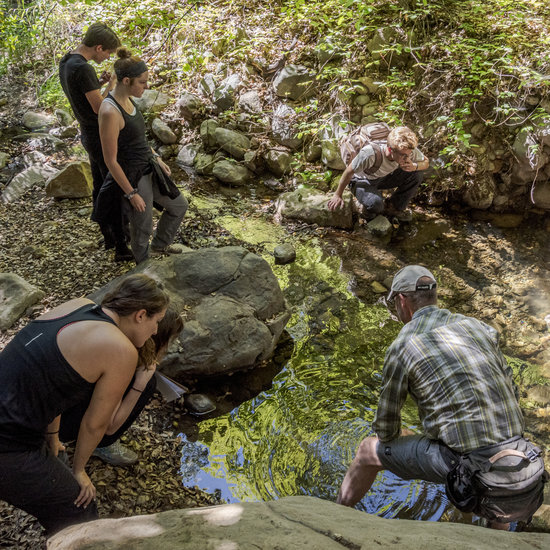Corralling Crayfish: Seaver College Faculty and Students Pursue Conservation Research to Prevent the Infestation of Mosquitoes in Los Angeles

It started in the 1950s when fishermen from the south decided to explore the Pacific Coast. Hauling their rods, reels, and spinners across the country, they looked forward to wrangling in some new game using a secret weapon––live bait. Crayfish filled the tackle boxes bouncing in the back beds of their pickup trucks. Since then, the creatures native to the southern bayou have infested the lakes and streams of the Santa Monica mountains, knocking the natural order of the ecosystem off course and creating an influx of virus-spreading insects like mosquitoes throughout Los Angeles.
This is the historical precedent driving the research of Gary Bucciarelli, Pepperdine University’s senior science grant writer, Lee Kats, Seaver College’s interim dean and Frank R. Seaver Chair of Natural Science, and a group of Seaver College students who are all concerned with preserving the ecosystem and preventing the spread of disease. In their latest publication––”Native amphibian toxin reduces invasive crayfish feeding with potential benefits to stream biodiversity”––Bucciarelli and his team discovered that the secret to warding off this invasive species might come in the form of the California Newt.
“California newts are poisonous,” says Bucciarelli. “All amphibians are actually poisonous, but a defining trait of the California newt is this naturally occurring neurotoxin which comes off their skin. In past research, we've looked at how this neurotoxin affects native species, but this time we wanted to see if it does anything to crayfish.”
While the push to eradicate crayfish from California could seem excessive, their presence in the Santa Monica Mountains has dramatic implications. The bayou crustaceans have begun killing off the natural predators of mosquitoes, creating, in turn, an overabundance of the blood sucking insects carrying virulent diseases in Los Angeles County.
In 2023, the state reported a boom of 153 West Nile virus cases, and in September, the San Fernando Valley announced that a resident died as a result of the disease. Following this incident, the County of Los Angeles released a statement encouraging residents to protect themselves from mosquitoes using different repellents and preventative precautions such as using screened windows and reducing standing water.
Given this context, the California newt’s neurotoxin represents a potential untapped solution which could prove helpful in warding off or at least slowing down the increase of invasive crayfish.
To investigate the California newt and the effects of its poison, Bucciarelli, Kats, and their students captured specimens from the Santa Monica Mountains and brought them into the controlled environment of their lab to concoct a poisonous solution similar to what might be found flowing in a natural stream. They introduced a selection of crayfish to this toxic liquid and observed how they reacted in comparison to a control group of non-affected specimens.
The results reveal that the neurotoxin oozing off the California Newts skin does, in fact, slow the foraging, feeding, and movement behaviors of crayfish. Bucciarelli and his team consider this revelation an important example of the need to preserve the natural biodiversity of ecosystems.
“In this instance, we've looked at the natural predators of just mosquitoes,” says Bucciarelli. “That's just one group of insects in the stream. Who knows how else crayfish are potentially affecting the natural order of things in these ecosystems? Who knows what all the other benefits of ensuring biodiversity are?”
Bucciarelli claims that Seaver College students play an important role in answering these pressing questions. Those who participated in this most recent study were integral in designing and conducting the experiments vital to this research.
“Undergraduates at Pepperdine are so driven to do hands-on research,” says Bucciarelli. “Early on in their academic career, students are empowered to ask questions and engage with faculty as a research assistant, which instills confidence and inspires them to be creative.”
What started with fishermen in the 1900s ends with Pepperdine students and faculty members in the 2000s. Their next project is already underway, as Bucciarelli, Kats, and their students investigate the broader ecological ramifications of Newt’s neurotoxin in the hopes of propelling them one step closer to slowing the infestation of foreign species.